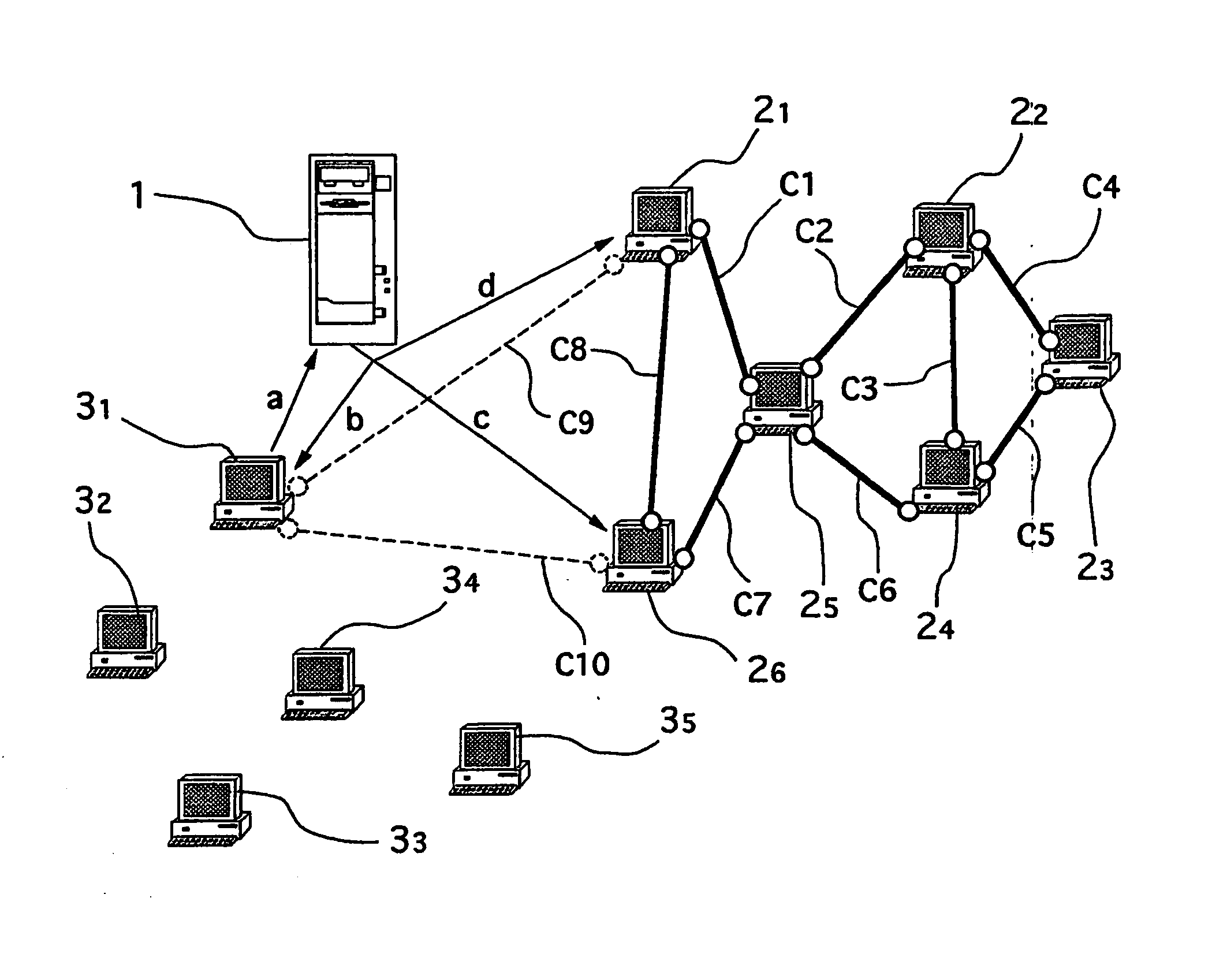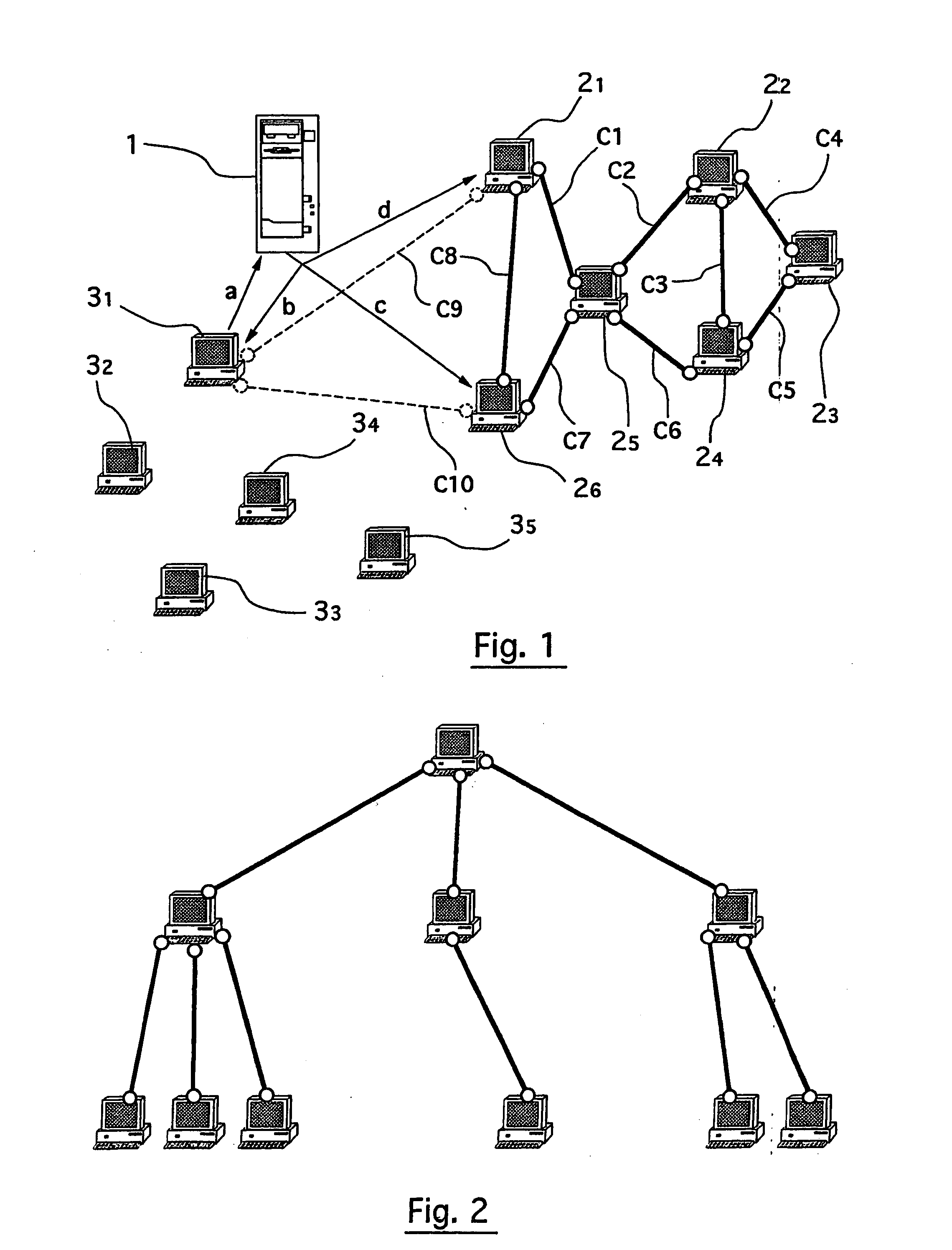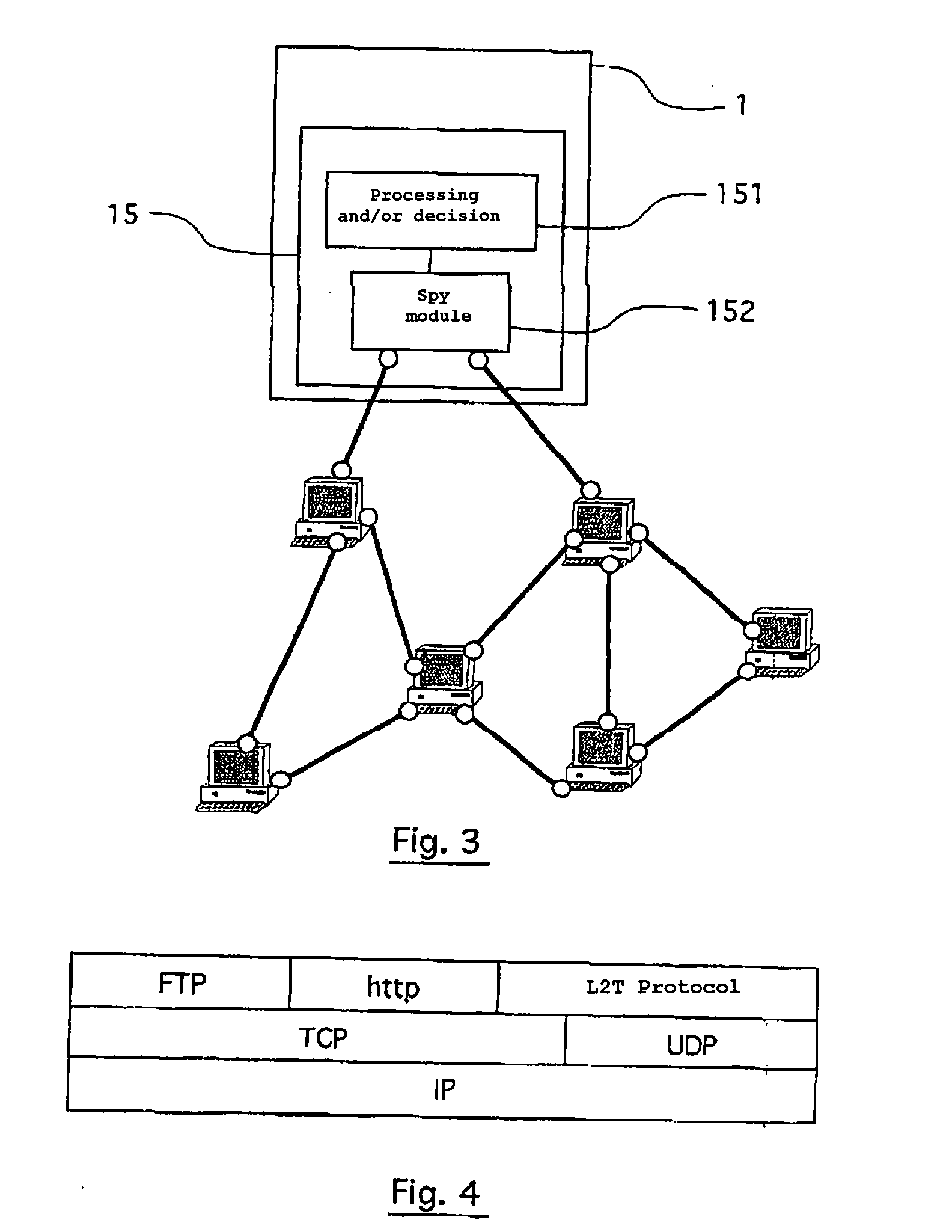Method for communication and/or machine resource sharing among plurality of members of a community in a communication network
- Summary
- Abstract
- Description
- Claims
- Application Information
AI Technical Summary
Benefits of technology
Problems solved by technology
Method used
Image
Examples
Embodiment Construction
[0147] The invention therefore relates to a process for communication and / or machine resource sharing, within a communication network, between a plurality of members of a community.
[0148] In the remainder of the description, it is presupposed that the communication network is of the IP type, in other words based on the Internet protocol. It is clear that the invention is not restricted to this particular type of communication network.
[0149] A presentation will now be given in a detailed way, in relation to FIG. 1, of the general principle of the process according to the invention, which consists in combining a centralisation of the management of the graph of connections between active members, with a decentralisation of exchanges between active members (“hybrid peer-to-peer”).
[0150] In the remainder of the description, it is pre-supposed that the aforementioned centralisation is implemented by a single central server 1. It is clear however that the invention also covers the situa...
PUM
 Login to View More
Login to View More Abstract
Description
Claims
Application Information
 Login to View More
Login to View More - R&D
- Intellectual Property
- Life Sciences
- Materials
- Tech Scout
- Unparalleled Data Quality
- Higher Quality Content
- 60% Fewer Hallucinations
Browse by: Latest US Patents, China's latest patents, Technical Efficacy Thesaurus, Application Domain, Technology Topic, Popular Technical Reports.
© 2025 PatSnap. All rights reserved.Legal|Privacy policy|Modern Slavery Act Transparency Statement|Sitemap|About US| Contact US: help@patsnap.com



